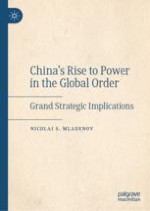2021 | OriginalPaper | Buchkapitel
2. American Post-World War II Grand Strategy and Modes of World Leadership
verfasst von : Nicolai S. Mladenov
Erschienen in: China's Rise to Power in the Global Order
Aktivieren Sie unsere intelligente Suche, um passende Fachinhalte oder Patente zu finden.
Wählen Sie Textabschnitte aus um mit Künstlicher Intelligenz passenden Patente zu finden. powered by
Markieren Sie Textabschnitte, um KI-gestützt weitere passende Inhalte zu finden. powered by
